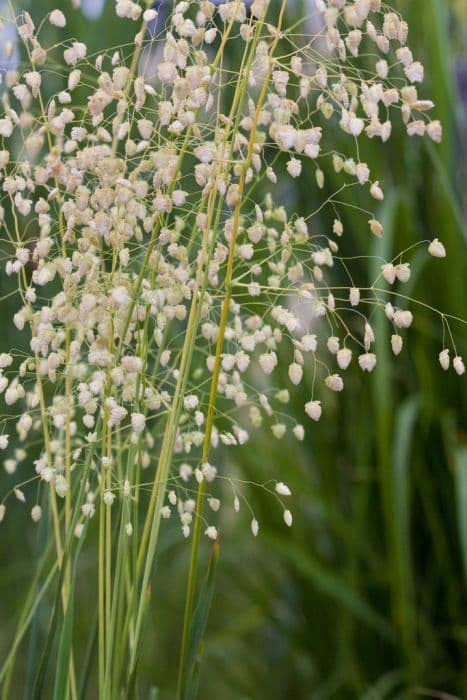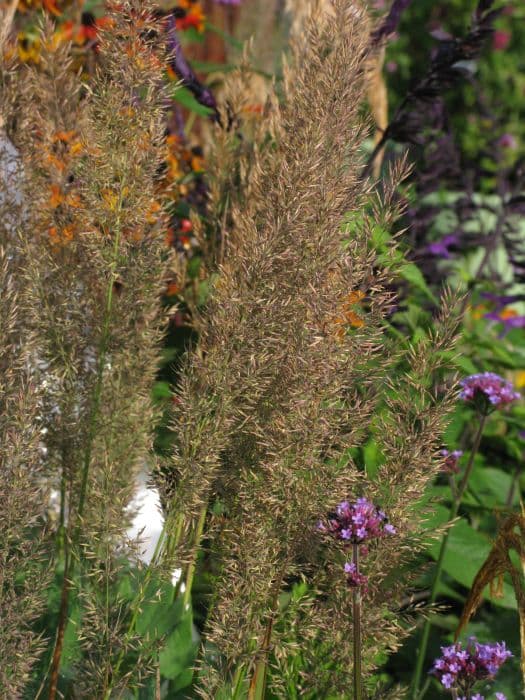Tall Moor Grass Molinia caerulea subsp. arundinacea 'Karl Foerster'
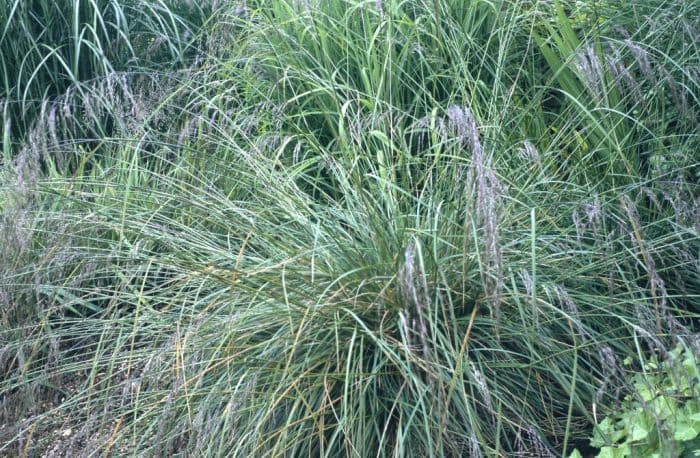

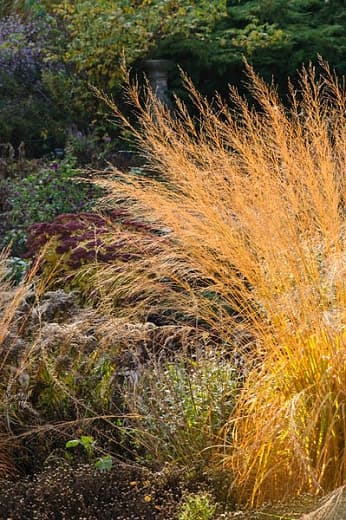
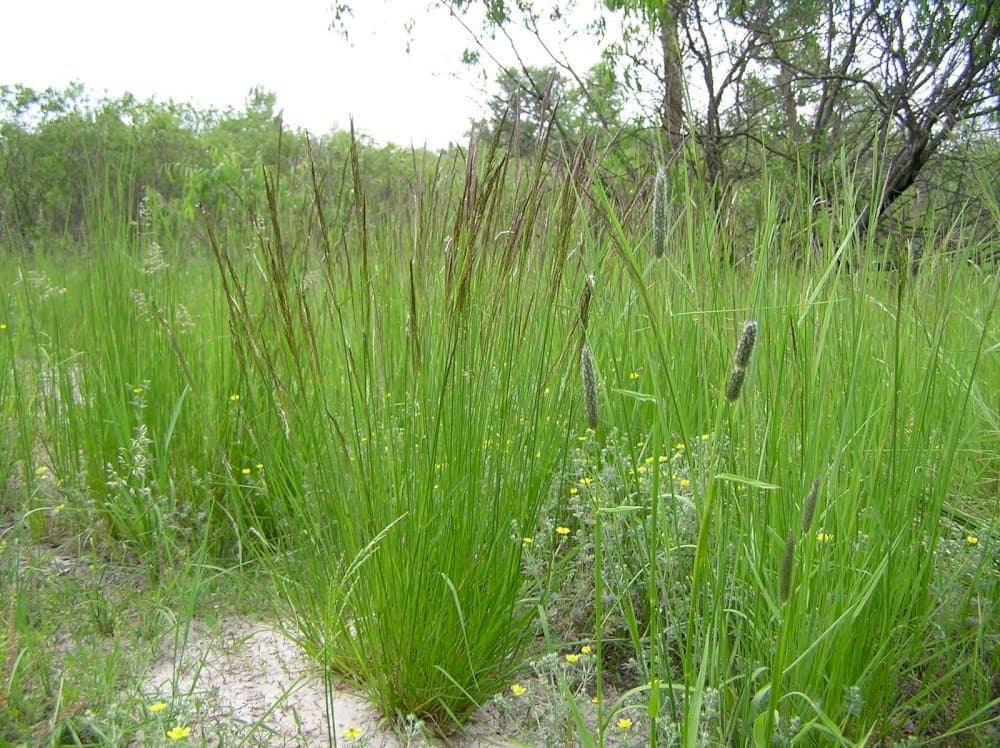
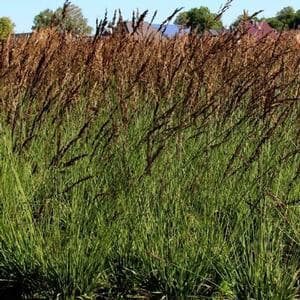
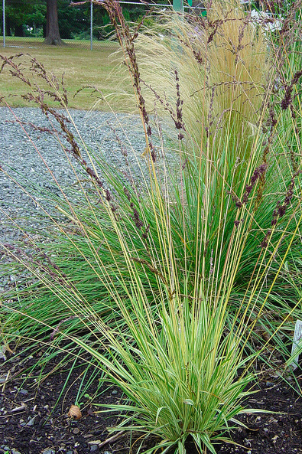

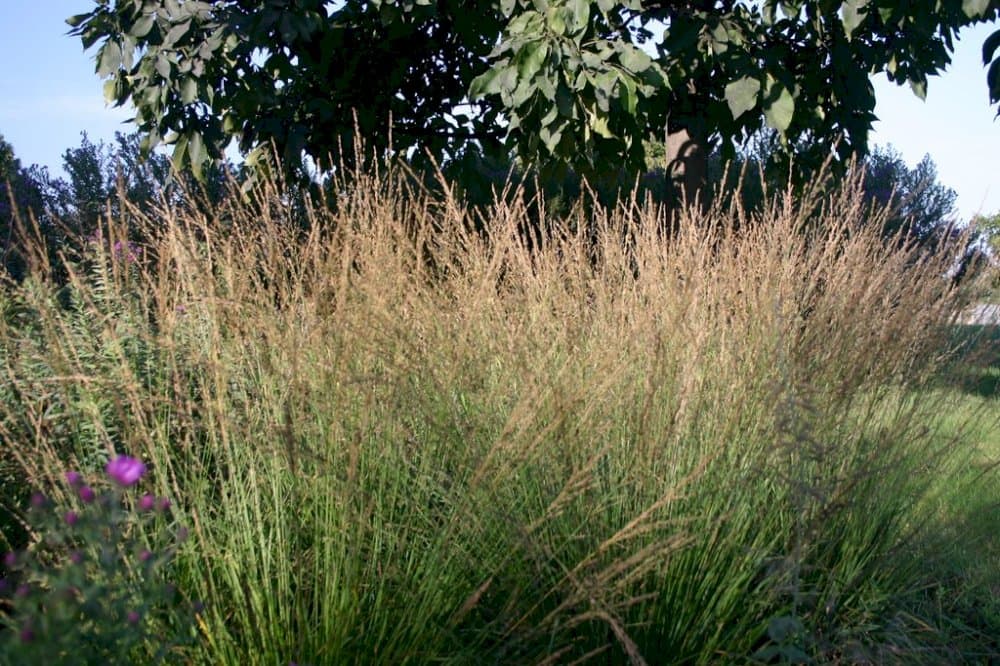
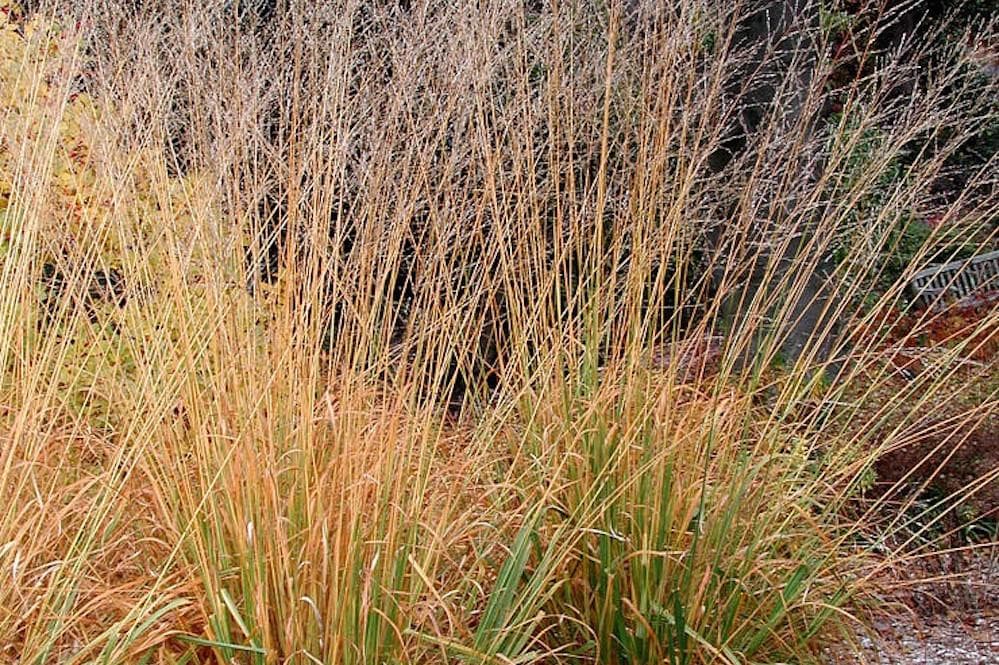
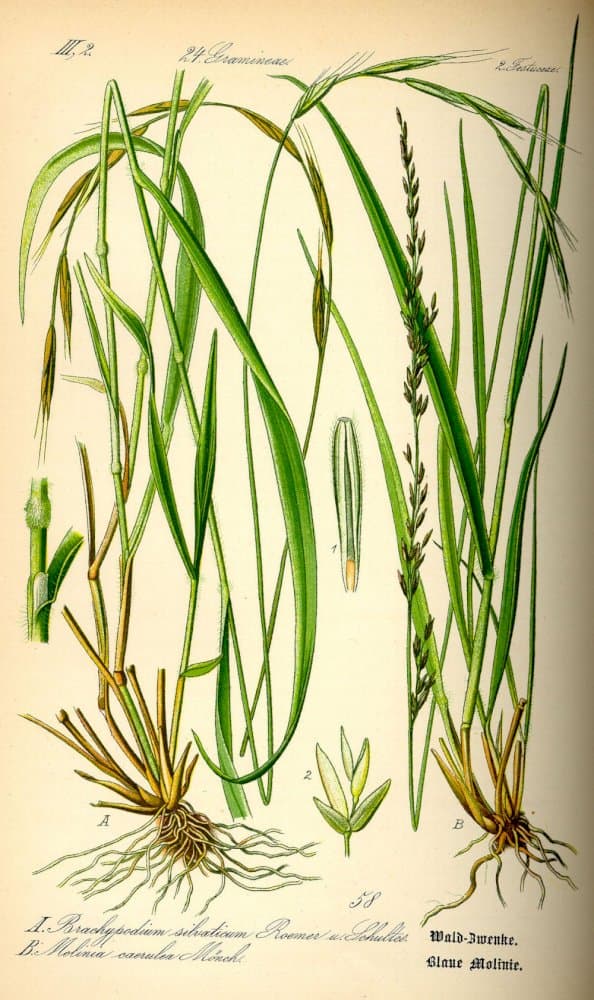
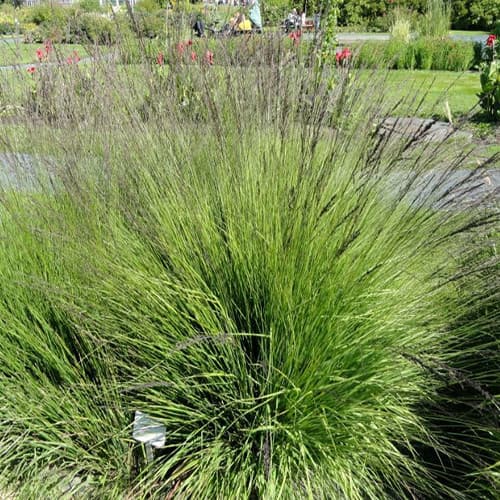
ABOUT
The plant known as 'Karl Foerster' is a cultivar known for its appealing visual characteristics. It displays a clump-forming growth habit, with tufts of long, narrow leaves. These leaves often have a lush green color in the spring and summer, transitioning to lovely golden tones in the fall. This change in foliage color adds a seasonal interest to gardens. One of its striking features is the upright, feathery flower spikes that appear above the foliage. These blooms usually show a purplish to greenish tint early on and mature to a light golden brown. The flowers are quite elegant, providing a delicate texture that sways gracefully in the breeze. This plant's overall structure lends itself to creating a vertical accent in landscape designs, with its flower spikes contributing to a distinctive architectural quality. It exhibits a natural, yet somewhat formal appearance, making it versatile for various garden themes. It's also noteworthy that, during the winter, the plant's structure can provide visual interest with its dried form remaining steadfast, capturing snow or frost for additional seasonal beauty.
About this plant
 Names
NamesFamily
Poaceae
Synonyms
Tall Moor Grass, Karl Foerster's Purple Moor Grass
Common names
Molinia arundinacea 'Karl Foerster', Molinia caerulea 'Karl Foerster'.
 Toxicity
ToxicityTo humans
Purple Moor Grass is generally not considered toxic to humans. There are no common reports of poisoning or adverse effects from ingesting any parts of this plant. However, as with any plant, individual allergies or sensitivities can occur, so it is always advisable to exercise caution and avoid ingesting plant material that is not known to be safe.
To pets
Purple Moor Grass is not known to be toxic to pets. It is not associated with the common symptoms of poisoning that can be seen with other toxic plants. Therefore, ingesting parts of this plant is not expected to cause significant health issues for pets. However, overconsumption of any plant material can potentially cause gastrointestinal upset, such as vomiting or diarrhea, so it is still wise to make sure pets do not consume large quantities of this or any non-food plant.
 Characteristics
CharacteristicsLife cycle
Perennials
Foliage type
Deciduous
Color of leaves
Green
Flower color
Varies
Height
5 feet (1.5 meters)
Spread
2 feet (0.6 meters)
Plant type
Grass
Hardiness zones
5
Native area
Europe
Benefits
 General Benefits
General Benefits- Aesthetic Appeal: Tall Moor Grass 'Karl Foerster' contributes an elegant vertical element to landscapes with its lofty stature and feathery flower plumes.
- Drought Tolerance: Once established, it is relatively drought-tolerant, making it suitable for low-water gardens.
- Wildlife Habitat: The plant provides shelter and nesting opportunities for birds and small animals.
- Seasonal Interest: It offers a variety of seasonal displays, from green foliage in spring, to tawny seed heads in autumn and winter.
- Low Maintenance: This ornamental grass requires minimal care, with no need for frequent watering, fertilizing, or pruning.
- Erosion Control: The robust root system helps stabilize soil and prevent erosion.
- Adaptability: It adapts to a range of soil types, from clay to sandy soils, though it prefers moist conditions.
- Design Versatility: Ideal for mass planting, borders, and as a specimen plant, it allows for creative garden designs.
- Non-Invasiveness: Unlike some grasses, it typically does not spread by rhizomes and is considered non-invasive.
- Cold Hardiness: It is tolerant of cold temperatures and can thrive in various climates, including those with harsh winters.
 Medical Properties
Medical PropertiesThis plant is not used for medical purposes.
 Air-purifying Qualities
Air-purifying QualitiesThis plant is not specifically known for air purifying qualities.
 Other Uses
Other Uses- Molinia caerulea subsp. arundinacea 'Karl Foerster', commonly known as 'Karl Foerster' grass, can be used as a natural dye for fabrics, providing a range of earthy tones depending on the mordant used.
- The dried stems of 'Karl Foerster' grass make excellent material for thatched roofs in traditional or sustainable building projects.
- The robust stems can be used for making small handcrafted items such as baskets, mats, or even as a natural weaving material.
- Sonorous qualities of the dried stems can be utilized in creating sound installations or as components in musical instruments for percussion effects.
- During winter, 'Karl Foerster' grass can serve as a visual interest in snow-covered gardens due to its tall and upright structure.
- The grass can be incorporated into educational programs to teach about wind pollination and the lifecycle of perennial plants.
- It can be used as a substrate for certain types of mushroom cultivation that require a fibrous material.
- In landscape photography, 'Karl Foerster' grass provides a striking vertical element against horizontal landscapes, especially during the golden hour.
- This grass can be fashioned into brooms or brushes for cleaning in a sustainable and biodegradable way.
- The seeds of 'Karl Foerster' grass can be used as a filling for homemade bird feeders, attracting a variety of birds to the garden.
Interesting Facts
 Feng Shui
Feng ShuiThe Karl Foerster grass is not used in Feng Shui practice.
 Zodiac Sign Compitability
Zodiac Sign CompitabilityThe Karl Foerster grass is not used in astrology practice.
 Plant Symbolism
Plant Symbolism- Resilience: The Karl Foerster grass, being a hardy perennial, is often associated with resilience and the ability to withstand diverse and challenging conditions.
- Growth and Aspiration: Its tall, upright growth habit symbolizes reaching for greater heights and aspirations in life.
- Flexibility: Despite its height, Karl Foerster grass sways gracefully with the wind, representing flexibility and adaptability.
- Elegance: The feathery plumes and slender foliage exhibit an elegant appearance, often used to symbolize sophistication and beauty.
- Simplicity: The plant's simple structure and the subtle color of its inflorescences can denote a love for minimalist beauty and an appreciation for the understated.
 Water
WaterTall Moor Grass or 'Karl Foerster' prefers consistent moisture, particularly during its growing season in the spring and early summer. It should be watered deeply once or twice a week, depending on climate conditions such as temperature and humidity. In general, aim to provide about an inch of water each week, which equates to roughly 0.6 gallons per square yard of soil. During hot, dry spells, the frequency may need to be increased to maintain the soil's moisture, but always allow the top inch of soil to dry out between waterings to prevent overwatering and root rot.
 Light
LightTall Moor Grass thrives in full sun to light shade. The best spot for 'Karl Foerster' is a location where it can receive at least six hours of direct sunlight daily, although it can tolerate some light afternoon shade. Avoid deep shade areas, as too little light can cause the plant to grow poorly and reduce the density of its foliage.
 Temperature
Temperature'Karl Foerster' is hardy and adaptable, withstanding temperatures as low as -20°F and as high as 90°F, although it grows best in temperatures ranging from 60°F to 75°F. This variety of Tall Moor Grass is cold-tolerant and can survive winter frosts, making it suitable for many temperate climates.
 Pruning
Pruning'Karl Foerster' should be pruned to remove old foliage and encourage fresh growth. The best time for pruning is in late winter or early spring before new growth starts. Cut back the previous year's growth to within a few inches of the ground. This annual pruning helps to maintain an attractive shape and promotes the health of the plant by removing dead and damaged material.
 Cleaning
CleaningNot needed
 Soil
SoilThe best soil mix for Tall Moor Grass is one that is rich in organic matter, well-draining, and retains moisture without becoming waterlogged. It prefers a soil pH of 5.5 to 6.5, slightly acidic to neutral. Ample compost or peat moss can ensure the right balance of drainage and moisture retention for optimal growth.
 Repotting
RepottingTall Moor Grass, being a perennial grass, doesn't typically require repotting as it is usually grown outdoors. However, if grown in containers, it should only be repotted when it outgrows its pot, which may be every few years.
 Humidity & Misting
Humidity & MistingTall Moor Grass thrives in average outdoor humidity conditions. It does not require any special humidity adjustments when grown in its natural outdoor environment.
 Suitable locations
Suitable locationsIndoor
Not ideal for indoor growing; requires full sun.
Outdoor
Plant in full sun to part shade, in moist soil.
Hardiness zone
4-9 USDA
 Life cycle
Life cycleMolinia caerulea subsp. arundinacea 'Karl Foerster', also known as Tall Moor Grass, starts its life cycle when the seeds germinate in moist, well-drained soil in spring. The seedlings establish themselves quickly, developing deep root systems and a tuft of basal leaves. As the plant matures, it enters a vegetative growth stage where it forms clumps of narrow, erect, green foliage that can reach up to 7 feet in height, especially when the flowering stems are considered. In summer, it progresses to the reproductive stage, displaying tall, airy flower spikes that emerge above the foliage and turn a golden brown in fall, providing visual interest in the landscape. After setting seed, the plant goes into senescence with the foliage dying back during winter; however, the skeletal remains of the flower spikes often persist, offering a stark contrast against the winter landscape. Come spring, new growth emerges from the base as the plant completes its annual cycle of regrowth.
 Propogation
PropogationPropogation time
Late summer
The feather reed grass 'Karl Foerster' is often propagated by division, which is best done in the spring. This method involves digging up an established clump of the grass and carefully separating it into smaller sections, each with a portion of the root system. These sections are then replanted at the same depth they were growing at previously, ensuring that the roots are well spread out in the planting hole and that the soil is firmed around them. Water the new divisions thoroughly after planting to help establish them. This method is effective and maintains the characteristics of the parent plant, providing gardeners with new plants that are true to form.
